Can You Overfeed A Sourdough Starter?
This post may contain affiliate links.
You might have wondered if you can overfeed a sourdough starter? The colony of wild yeast and bacteria inside your starter jar are fairly resilient, however, like most living things, they can be overfed. When you overfeed a sourdough starter you dilute the natural population of yeast and bacteria, making your sourdough culture weak and inactive.
However, unlike not feeding it at all, your starter will not die from overfeeding. With a little love, your sourdough starter can recover from being overfed.
This article will show you how to know when your starter is being overfed, as well as how often you should actually feed it to ensure you have a healthy sourdough starter.
If you are currently making your own sourdough starter from scratch, you may also find these resources helpful:
- How to feed and maintain a healthy sourdough starter?
- Can I feed my sourdough starter different flour?
- How can I give my sourdough starter a boost?
- What is the Float Test?
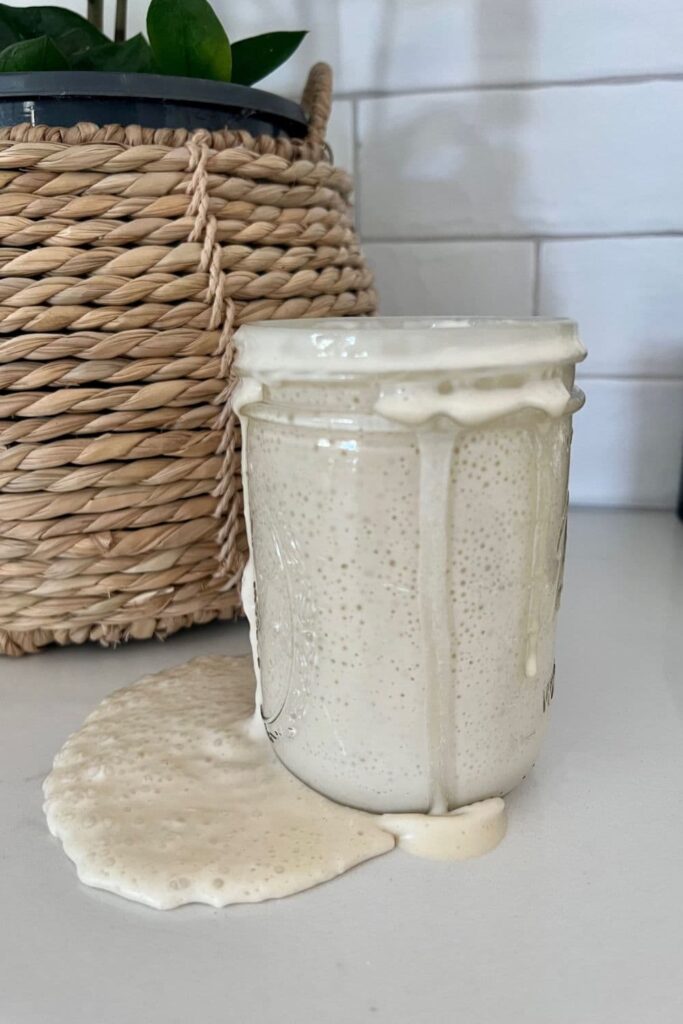
Can Sourdough Starter Be Fed Too Often?
Yes a sourdough starter can be fed too often. As a general rule, a sourdough starter doesn't need to be fed more than twice a day when kept at room temperature. Even if your sourdough starter doubles in a very short amount of time, it doesn't need to be fed again straight away.
It's important to feed your starter twice a day in the initial stages to ensure you are creating a strong and active colony of wild yeast and bacteria. Once your starter is mature, it will tolerate being fed once a day. And if you store your mature sourdough starter in the fridge, it can be fed much less than once a day and will even survive being fed every few weeks or less.
How Do I Know if I'm Overfeeding my Sourdough Starter?
If you're feeding your sourdough starter more than twice a day, chances are it's being overfed. Some other signs your sourdough starter is being overfed are:
- sourdough starter not bubbling or rising
- not smelling yeasty
- starter is runny
- lacklustre sourdough bread with no rise / gummy
- you're not using a kitchen scale to weigh your flour and water
How Much Should I Feed My Sourdough Starter?
Your sourdough starter should be fed twice a day in the beginning stages. It's important to feed by weight, not volume. Regular feedings help to ensure you are building a strong colony of yeast and bacteria. Feeding twice a day also ensures that you are regulating the acidity levels in your starter and not allowing too much acidity to build up, which can be detrimental to your starter.
The sourdough discard, which is the unfed portion of starter you remove from the jar before feeding your starter can be used to make sourdough discard recipes once your sourdough starter is at least 7 days old.
You can find the instructions for making a sourdough starter here, as well as information on how to feed a sourdough starter here.
Remember to pop a rubber band on your sourdough starter jar so you can see when your sourdough starter has doubled, or even tripled.
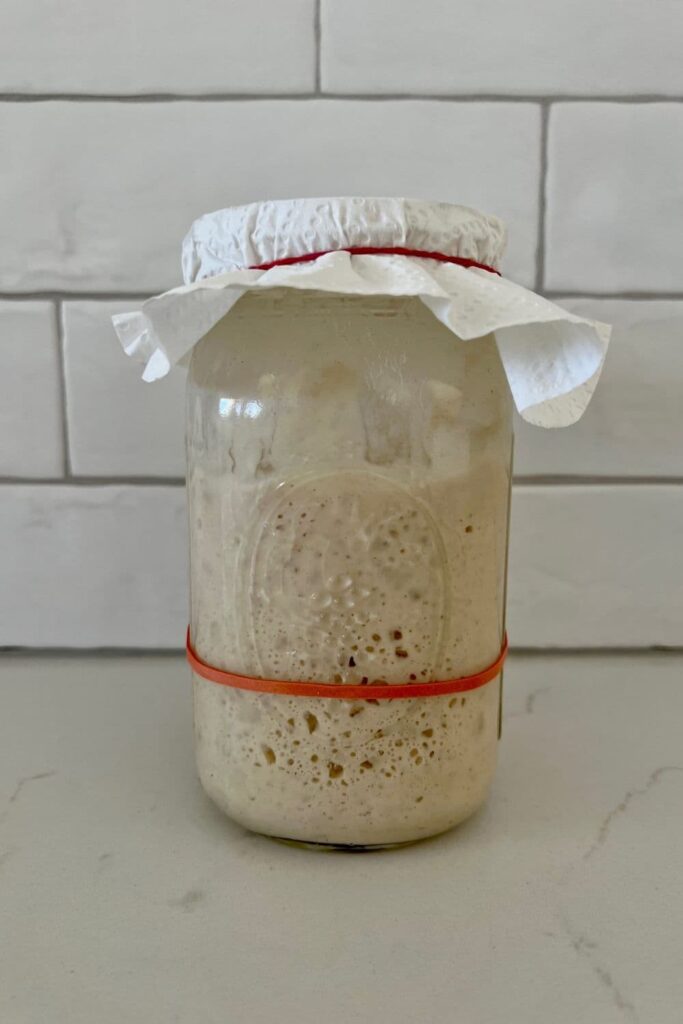
How Can I Rescue My Sourdough Starter If I've Been Overfeeding It?
The best thing about the problem of overfeeding a sourdough starter is that it's really easy to fix. You just need to feed it less!
Remove (discard) half of the starter (it's best to do this by weight) and then add the same amount of flour and water into the jar. Leave the starter for at least 12 hours (you can leave it for 24 hours if it was being fed more than 3 times a day).
For example if you have 100g of sourdough starter, remove 50g and then feed the remaining 50g in the jar with 50g of flour and 50g of warm water. Stir it vigorously and leave it alone so that the natural yeast and good bacteria colonies can start to flourish once again.
Will Overfeeding a Sourdough Starter Change the Acidity Levels?
Overfeeding a sourdough starter will put the culture out of balance. When you don't feed your sourdough starter enough, it will become very acidic because you aren't giving it fresh flour or fresh water and the waste will build up inside the jar.
Similarly, overfeeding the sourdough starter will mean that the starter may not have as much acidity as it should. This will have a negative effect on the starter as well as any sourdough bread you make.
A sourdough starter contains both lactic acid bacteria and acetic acid. The acid is produced by the bacteria in the starter, whereas the yeast produce C02 as a result of consuming the starches in the flour.
Does The Ambient Temperature Affect How Often I Should Feed My Sourdough Starter?
If you are keeping your starter in cooler temperatures, you may only need to feed it once every 24 hours because the ambient temperature will not be warm enough for fermentation to occur more quickly. You can find my best tips for keeping a sourdough starter warm here.
However, your sourdough starter shouldn't need additional feedings if you are keeping it in a warm spot. Twice a day will still be plenty - unless of course you are baking multiple times a day. High temperatures (above 30C) will just mean that your sourdough starter will peak a lot sooner and may also be a little thinner than it would normally be.
What Flour Is Best For Sourdough Starter?
You can feed your sourdough starter any type of unbleached flour. The most popular choices are bread flour and all purpose flour, but whole wheat flour and rye flour are also good, solid choices. Whole grain flours will absorb more water than white, processed flours, so you may need to add slightly more water depending on the consistency of your starter. Remember that it will thin out as the fermentation process occurs.
A mixture of flour is also a popular choice, with rye being added to white flour for a super active sourdough starter.
You can read more about the best flour for sourdough here.
You can change the type of flour your sourdough starter is fed fairly easily. This guide to feeding your sourdough starter different flour will help to guide you through the process.
What Happens If You Feed a Sourdough Starter Too Much Flour?
If you add more flour than water into your sourdough starter jar, it will be a very stiff starter. This is not always a bad thing, and sometimes extra flour is necessary to rectify a runny starter or make the starter peak at a later time.
Feeding a sourdough starter too much water is worse as the starter won't have enough flour to feed on and it will be runny and less bubbly than it should be.
A strong sourdough starter is generally fed equal amounts of flour and water twice a day.
Frequently Asked Questions
No there's no reason to feed your sourdough starter more than twice a day. If you are feeding it more than twice a day, then you risk diluting the natural population of yeast and bacteria and throwing the balance of the starter out completely.
Fruit flies are an annoying pest and once they are in your kitchen they can be hard to get rid of. The good new is that you don't have to throw away your sourdough starter, even if it gets fruit flies in it. This guide to dealing with fruit flies in your sourdough starter will help you to nip the issue in the bud and take your starter back from these kitchen pests.
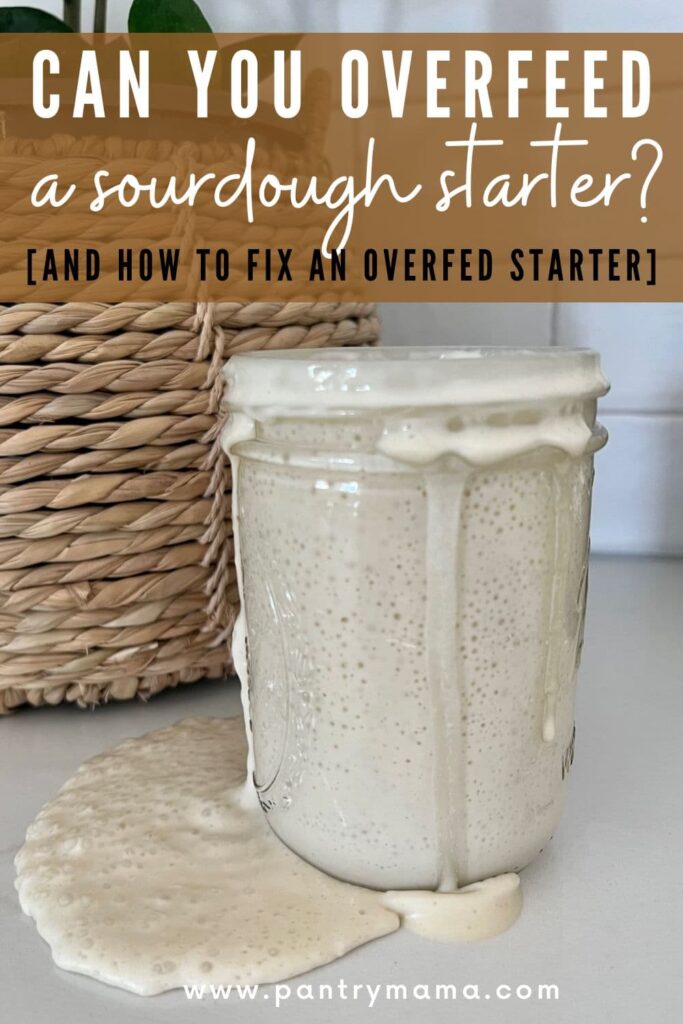
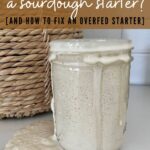
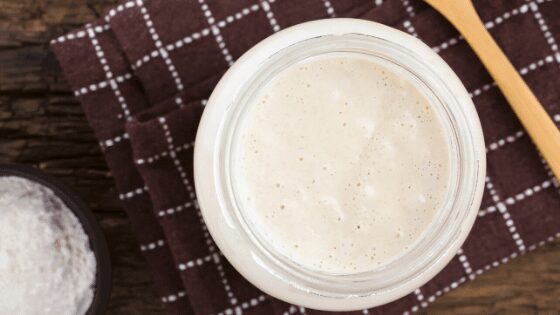
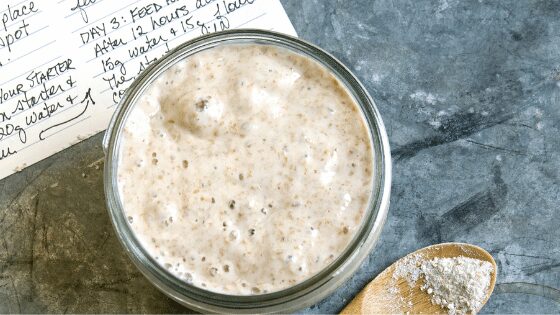
![Moldy Sourdough Starter [with photos of bad sourdough starter]](https://www.pantrymama.com/wp-content/uploads/2021/09/MOLDY-SOURDOUGH-STARTER-4-768x1152.jpg)
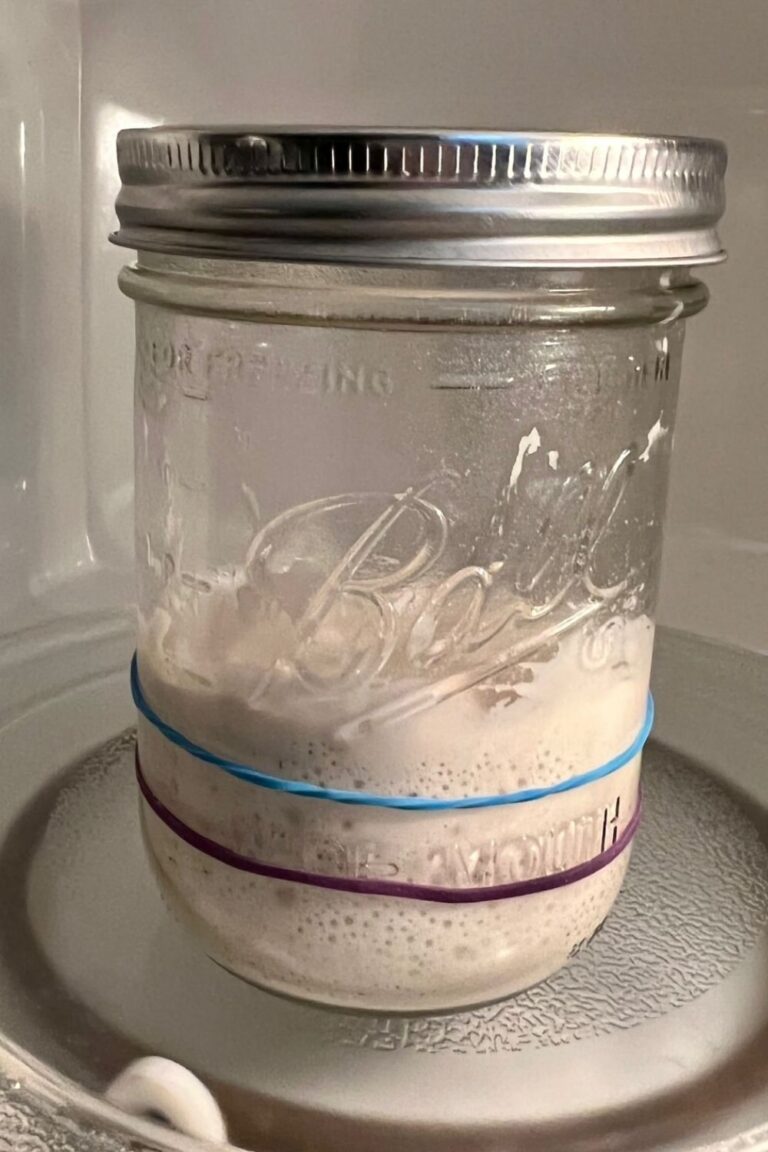
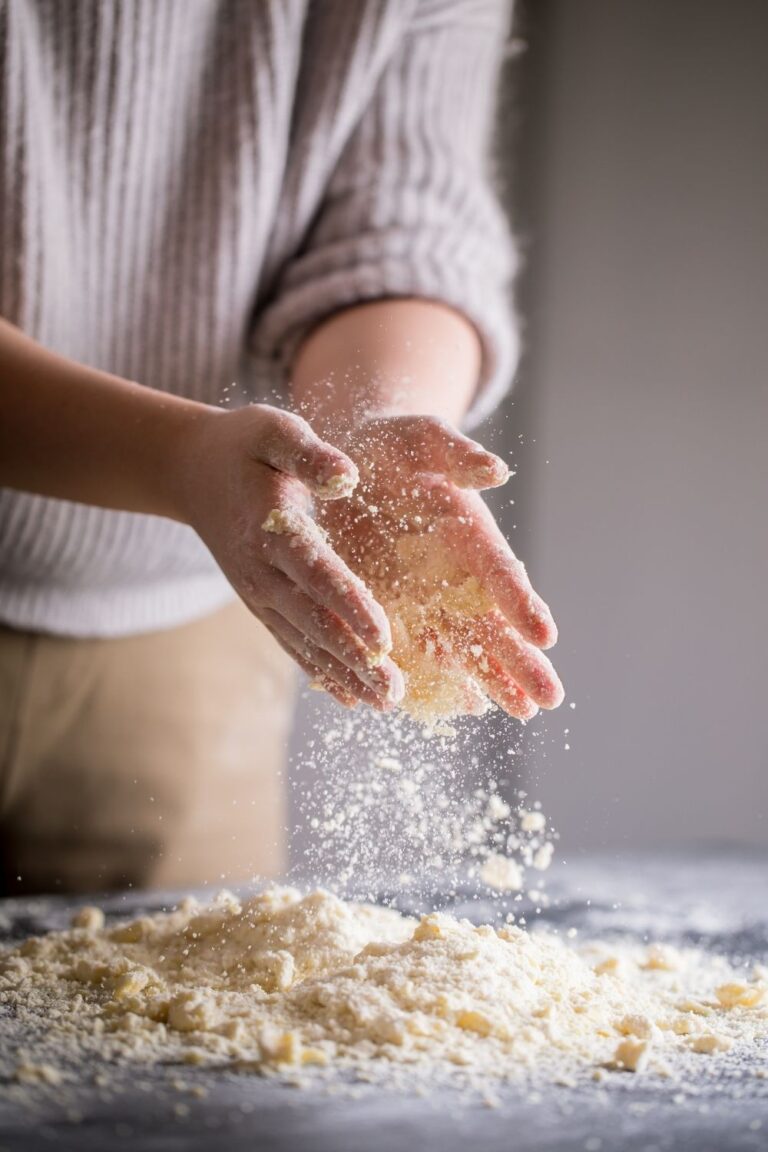
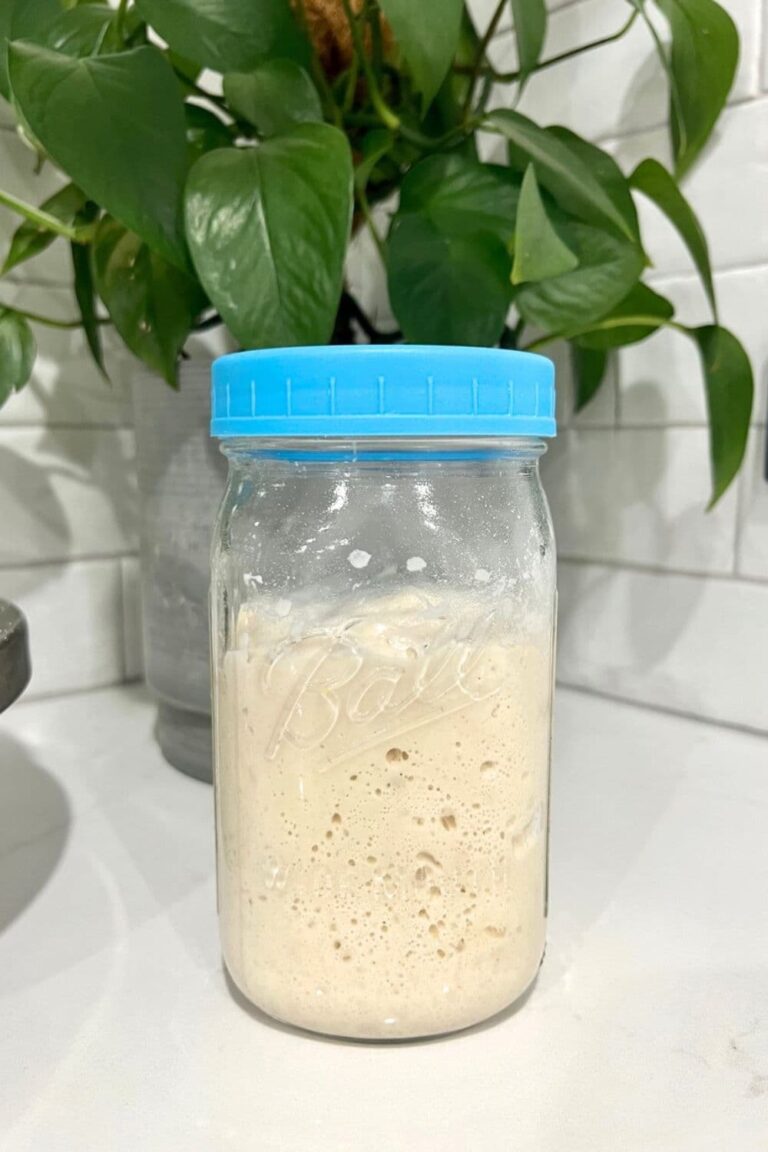

Shane Braddick here, this sourdough starter tip is great! Thanks
I just received my first sourdough starter from a friend two days ago and I think I've ruined it already. I added 1 cup flour and one cup water and stirred. The result was very runny. That was when I realized I only started with 1/2 cup starter. I read your post and it said to discard some and add more flour, but do I wait until tomorrow or add it asap?
Thank you!
Overwhelmed but Determined. 🙂
I just want to thank you so much for sharing this information, very helpful!
This helped me fix my over fed reconstituted starter
Thank you so much for all of this information! I have just started my sourdough journey and this has been an amazing resource!
I am not sure how you use your starter and replenish it in a recipe. Do you build the starter up before baking bread. Or do you use the discard to bak bread and replenish. This process is confusing to me. Please help. Thank you
I'm confused. Other sites say to feed the mature starter 35g starter, 70 flour/water ratio. This is to make my leaven. Help!!:)
This is all very helpful information however I’m wondering what to do when you have overfed given too much flour to your starter, rendering it in active.I went off schedule and fed my starter additional flower without adding water and without discarding in the middle of a feeding schedule thinking that this would help it. It is now almost non-active. It has not risen. It is watery and there are very few tiny bubbles. If any now on the top there were some bubbles yesterday but now none I don’t see any bubbles on the sides or bottom of the jar either.How do I fix this problem? It has been at least 24 hours since I overfed it.